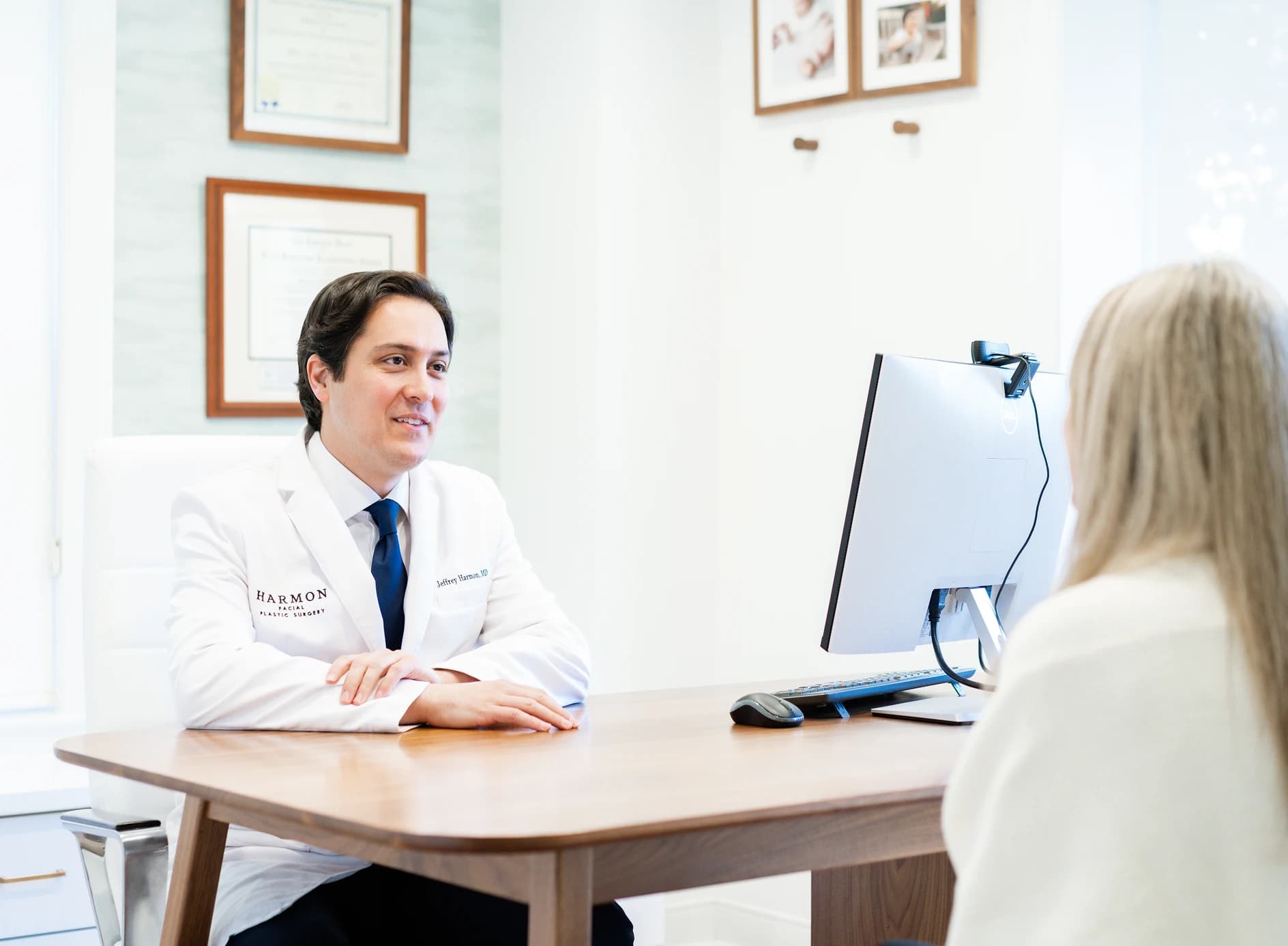
The nose is composed of multiple, matching, complexly shaped cartilage pieces and bone. The use of additional cartilage is often required to achieve specific functional or aesthetic goals during nose surgery (rhinoplasty). For example, cartilage can be used to open and strengthen the valves of the nose to improve nasal breathing. It can also be used to change the contours of the nose to achieve a specific aesthetic result. There are four different sources of cartilage used in nose surgery (rhinoplasty) to achieve the functional and aesthetic goals of the operation. It is important to seek not only a fellowship-trained but also a double board-certified facial plastic surgeon if you have aesthetic concerns about your face and/or neck.
Nasal Septum
The nasal septum, located inside the nose, is the “wall” that separates the left from the right nasal cavity. It is composed of cartilage and bone. The bone is sometimes used for grafting. However, it is usually the cartilage only that is used for grafting.
The nasal septal cartilage is an ideal source for most needs during nose surgery (rhinoplasty). It is relatively straight and strong. The thickness is usually ideal. There is typically enough that can be removed to accomplish the functional or aesthetic goals of grafting. Except in select circumstances, nasal septal cartilage is usually the first cartilage used during nose surgery (rhinoplasty).
There are cases when this cartilage is not available or ideal. For example, patients with severe injuries to their nose may have septal cartilage that is crushed and severely scarred. Other patients may have undergone a septoplasty or nose surgery (rhinoplasty) previously and have inadequate cartilage available. The options below are typically used when this is the case.
Ear
The ears include a large piece of cartilage with complex folds. There are subunits to the cartilage in the ear, also known as the auricle. The area harvested is called the concha, which is the bowl-shaped area closest to the opening of the ear canal. This area contains cartilage that closely matches the size and shape of the nostrils. Removal of a portion of the concha is also less likely to result in deformities to the ear compared with other areas.
Conchal cartilage is also not always ideal for use. It is not as strong as other cartilage sources. As a result, it is less useful when strong structural support of the nose is required. There is less cartilage available from a single ear when compared with a previously untouched septum. And this cartilage can become hard and brittle with advanced age, limiting its usefulness in some individuals.
Rib
The rib is an ideal source of cartilage for many reasons. First, it can be strong like septal cartilage. Second, abundant cartilage can be harvested. This makes it particularly useful for large grafts such as those meant to increase the height of the nasal bridge. Third, its shape allows additional flexibility in carving the exact shape and size graft required. This graft can be very useful for revision nose surgery (rhinoplasty) when extensive grafting is required and there is no longer septal cartilage to use. The rib cartilage is harvested through an incision below the breast.
Many patients prefer to avoid the additional procedure below the breast and its associated recovery and incision. Another option for rib is donor rib cartilage that is processed and tested to ensure its safe, effective use.
The Most Appropriate Source of Cartilage Depends on Multiple Factors
Some patients do not require cartilage grafting. For those who do, the most appropriate cartilage source depends on the size and shape of the graft required, the patient’s medical and surgical history, and their personal preferences. The plan for cartilage harvesting is discussed with the patient pre-operatively.
Trust Your Face to a Facial Plastic Surgeon
It is important to seek a fellowship-trained specialist in plastic surgery of the face and neck when you have concerns about your nose.
Why Choose Dr. Harmon
- The mission of Harmon Facial Plastic Surgery is to help people along their journey towards self-confidence, to feel good about feeling good.
- Dr. Harmon is a double board-certified facial plastic surgeon
- Dr. Harmon values making patients feel welcomed, listened to, and respected.
- Dr. Harmon graduated with honors from Cornell University with a Bachelor of Science degree in molecular biology.
- Dr. Harmon earned his medical degree from the University of Cincinnati.
- Dr. Harmon underwent five years of extensive training in head at neck surgery at the prestigious residency program at the University of Cincinnati.
- Dr. Harmon then underwent focused fellowship training in cosmetic facial plastic surgery through the American Academy of Facial Plastic and Reconstructive Surgery (AAFPRS) with the world-renowned surgeon, Dr. Andrew Jacono, on Park Avenue in New York City.
Request a Consultation
Request a consultation with Dr. Harmon at Harmon Facial Plastic Surgery in Cincinnati. Visit our clinic. You will learn more about Dr. Harmon’s credentials, style, and approach. Build a relationship with our dedicated team. Do not stop at searching “plastic surgery near me.” Get in touch with us to learn more!
Disclaimer
This blog post is for educational purposes only and does not constitute direct medical advice. It is essential that you have a consultation with a qualified medical provider prior to considering any treatment. This will allow you the opportunity to discuss any potential benefits, risks, and alternatives to the treatment.

Book Your Consultation
Take the first step toward enhancing your natural beauty by scheduling a personalized consultation with Dr. Jeffrey Harmon. As a double board-certified facial plastic surgeon trained by the pioneer of the extended deep plane facelift, Dr. Harmon offers expert guidance and care. Whether you're considering surgical or non-surgical options, our team is here to support your journey to renewed confidence.